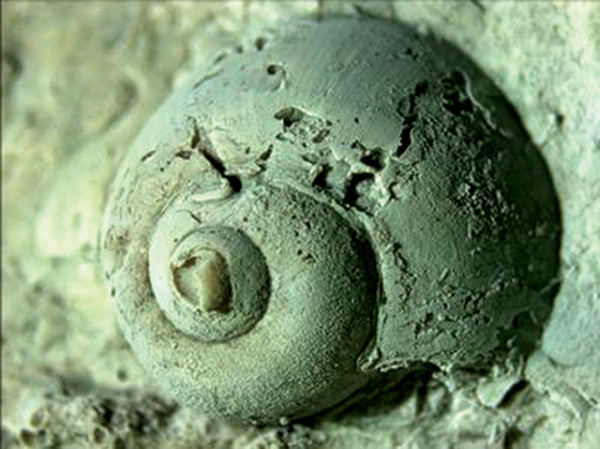
by Allison Mills Monday, October 6, 2014

Freshwater snail fossils were key in determining the French origins of millstones found in Ohio. Credit: Joseph Hannibal.
What’s the difference between France and Ohio? A few fossils. Common Ohio chert looks like a rock called French buhr found around Paris, except for a couple of fossils. Researchers say these fossils can be used to distinguish the Ohio flint from its often-misidentified French lookalike.
Neither rock is showy like a granite countertop; they’re gray, hefty and cut for practical use — and hard to tell apart just by sight. But Midwestern millers of the 1800s and early 1900s seemed to show a preference for the French buhr over local stone.
“I questioned how these stones had been identified as originating from France or Ohio,” said Joseph Hannibal, an invertebrate paleontology curator at the Cleveland Museum of Natural History and lead author of the new study in PALAIOS, in a statement. He led a team of students who visited dozens of mill sites, looking at hundreds of stones. They selected 16 for the study, analyzing thin sections and gathering fossil impressions. The differences they found in the fossils are small, but they’re distinct.
French buhr, which formed in a freshwater environment, hosts both algae and snail fossils. The marine fossils found in Ohio chert include brachiopods and oval-shaped fusulinids. This makes the imported stone easier to tell apart from its domestic counterpart.
“The story of the importation of this stone from France is not widely known,” said Hannibal in a statement. He says the French stone is often mistaken for local chert and fossil identification will be a new way to study old trans-Atlantic stone trade patterns.
© 2008-2021. All rights reserved. Any copying, redistribution or retransmission of any of the contents of this service without the expressed written permission of the American Geosciences Institute is expressly prohibited. Click here for all copyright requests.